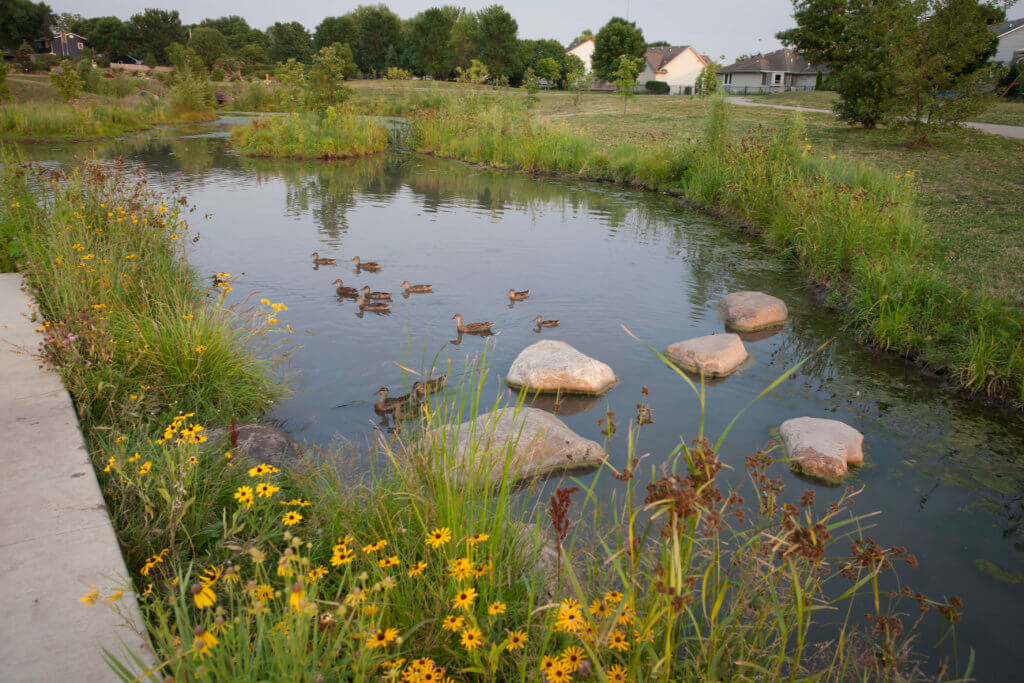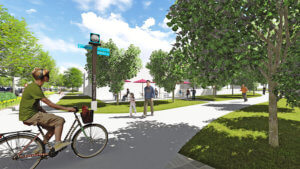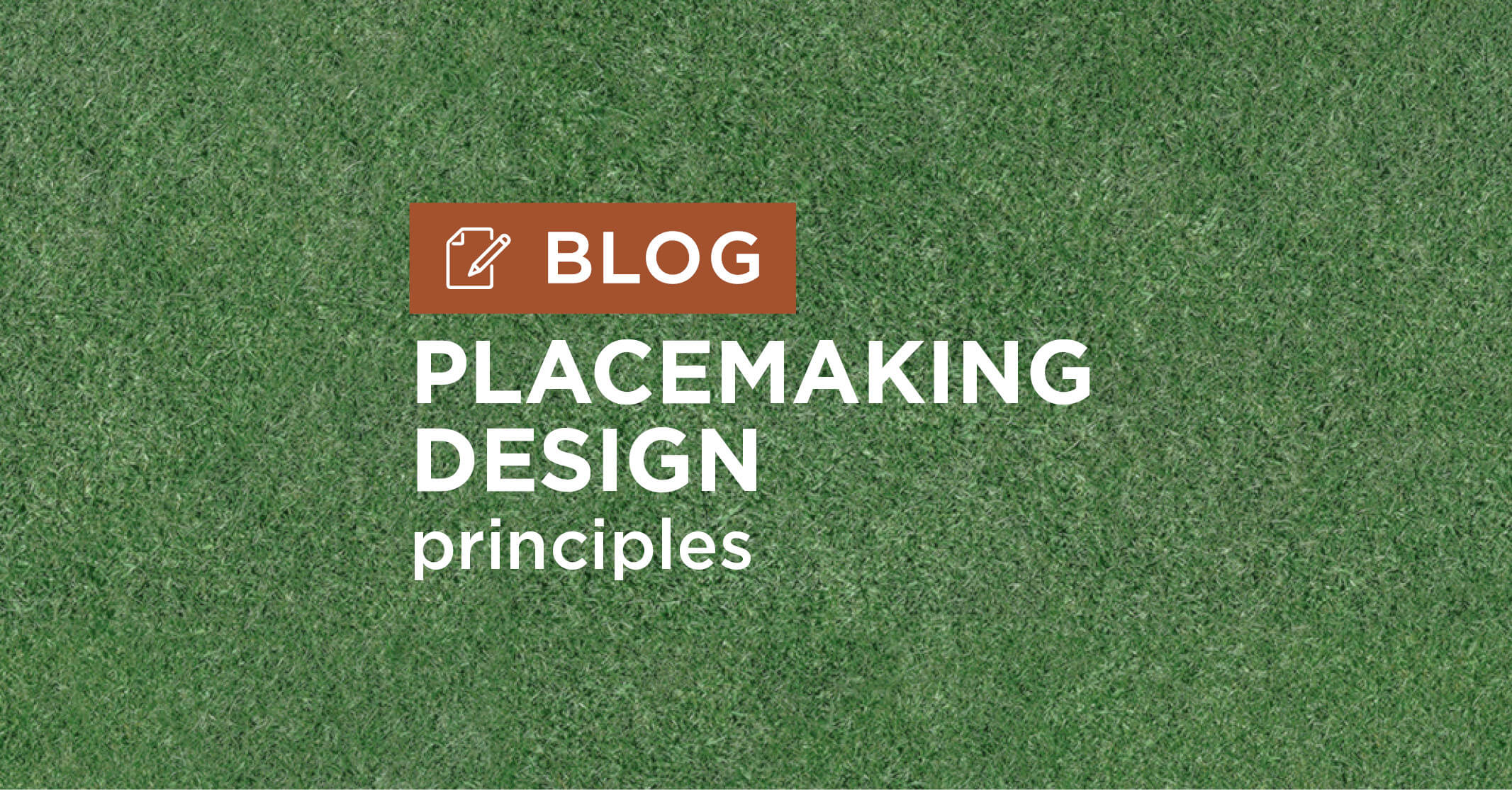Enhancing Local Identity & Sense of Place through Placemaking
What makes one public space or street corridor better than another? What draws people in and makes them want to stay?
At first, you may be tempted to say a variety of goods and services or the ease of accessibility. And you’d be right, but at the same time, it’s much more than that. When it comes to community placemaking, creating inviting places such as parks, streetscapes, and other public spaces is everything!
By enhancing the existing strengths of an area through design, placemaking adds visual interest to an area that attracts activity. It’s often utilized to highlight community character, promote healthy lifestyles, and support the economic vitality of the surrounding area. While we may not realize it, placemaking is part of what we cherish most about an area.
Placemaking strengthens our emotional ties to a place,” explains Landscape Architect Tim West, PLA, LEED AP. “It encourages an individual sense of belonging and ownership of an area, creating favorite locations that we visit again and again.”
4 Principles of Placemaking Capitalize on Community Assets & Potential
However, what works in one area, doesn’t always work in another. Strategic placemaking design is based on a few particular strengths of an area, so a one-size-fits-all design approach won’t be due. “Replicating a design often fails to be successful, but using a repeatable design process based on the principles of placemaking ensures a clear vision is established for each project space,” states West.
For this reason, Snyder & Associates’ Landscape Architects emphasize listening to the users of a space, whether they live, work, or vacation there. West says there are four key design components to placemaking—theme, active transportation, gateway and signage, and amenities.
1. Identity & Theme Creates Sense of Place
Establishing a theme is probably the most important component of community placemaking. The local community will have an opinion on how they’d like their space to look.

Native plants and grasses, like those utilized within the Prairie Heritage Civic Center Plaza, add to the aesthetic appeal while assisting with stormwater management and infiltration.
Some will want a more contemporary, reinvented space; others may prefer a more traditional look based on historical elements. Regardless of the appearance and vibe, using materials and colors in repetition will foster continuity and help define boundaries. Brick, limestone, and decorative fencing are popular placemaking materials for traditional themes, while stainless steel, metal panels, concrete, and LED lighting are often used for a more contemporary feel.
Native plantings can be used in this manner as well, and have the added benefit of being useful for stormwater treatment and infiltration. The use of native grasses and perennials at the Prairie Heritage Plaza in Altoona, Iowa established a colorful theme full of different textures that allows the area to stand out.
2. Safe Access & Accommodations for Efficient Circulation
Creating different zones for motorists, bicyclists, and pedestrians will enhance the user experience and make your public spaces safer. For example, vehicle traffic corridors might utilize reduced lane widths to slow motorists and wayfinding signs to identify access to parking areas. Dedicated bike lanes and enhanced visibility at intersections are often a primary focus for bike zones. Vertical elements such as shade trees, lighting, and architectural features physically separate vehicle and pedestrian zones, creating a more visually-appealing pedestrian experience. Designing streets as safe and comfortable places for everyone is a simple concept, but there are deliberate design choices that can enable multi-modal accommodations.
“On a streetscape project in Clinton, Iowa, this approach helped us match the speed and type of transportation in each of their circulation zones with appropriate placemaking elements,” shares West. “Larger, vertically-repetitive elements keep drivers focused on the road and the traffic around them, while walkway and storefront areas focus on the use of textures and details to spark pedestrian interest.”
3. Gateway Features & Signage Define the Space

A rendering of the Riverside Drive Streetscape in Iowa City will utilize specialty wayfinding signage to help guide users.
Establishing the outer limits of space through the use of gateway features lets users know they’ve entered a unique space. Architectural elements, such as columns or decorative fencing, are often used to help define a space. Specialty wayfinding signs, such as the ones found within Iowa City’s Riverside Drive Streetscape, let people know what services and attractions an area offers. They also provide an opportunity to use branding and color to reaffirm the identity and theme of the area.
4. User Amenities Draw People to Public Places
With a focus on user needs, you can incorporate different amenities into a streetscape that will encourage people to stay longer and increase their enjoyment of the area. Defining how the space will be used is key, and it’s important to program space for each type of activity. Providing a canopy through a mix of tree plantings, awnings, and overhead structures offers relief from the elements while defining the space in three dimensions and separating different traffic zones. Outdoor seating also encourages people to stay longer and can help support local businesses. Seating can take many different forms, including benches, seat walls, tables, and chairs. Trash receptacles, wayfinding signage, bike racks, and bike maintenance stations provide site amenities for people to use while they enjoy an area. Best of all, any of these design elements will support whatever programming is being developed for the space.
Gaining Local Support & Funding for Placed-Based Development
The aforementioned principles can be used to shape communities into better places. This in turn creates a vibrant community where residents not only have the option to, but also want to live, work, play, and interact.
When it comes to placemaking in your community, keep local strengths in mind and capitalize on them. Every community has specific needs to address when it comes to creating quality public spaces. By listening carefully to user groups and employing placemaking strategies, you can strengthen the social interaction of your community and create tangible spaces citizens are vested in and proud of.
Interaction among residents promotes a culture of involvement and fosters community connections. As West points out, it’s never too early to start planning for your community’s future. “The earlier you start planning for a particular amenity or project, the more opportunities you’ll have to look at the details, gather public input, and maximize potential funding sources,” he concludes.
To learn more about placemaking strategies and how to strategically plan for your public space improvements, contact Tim West.
